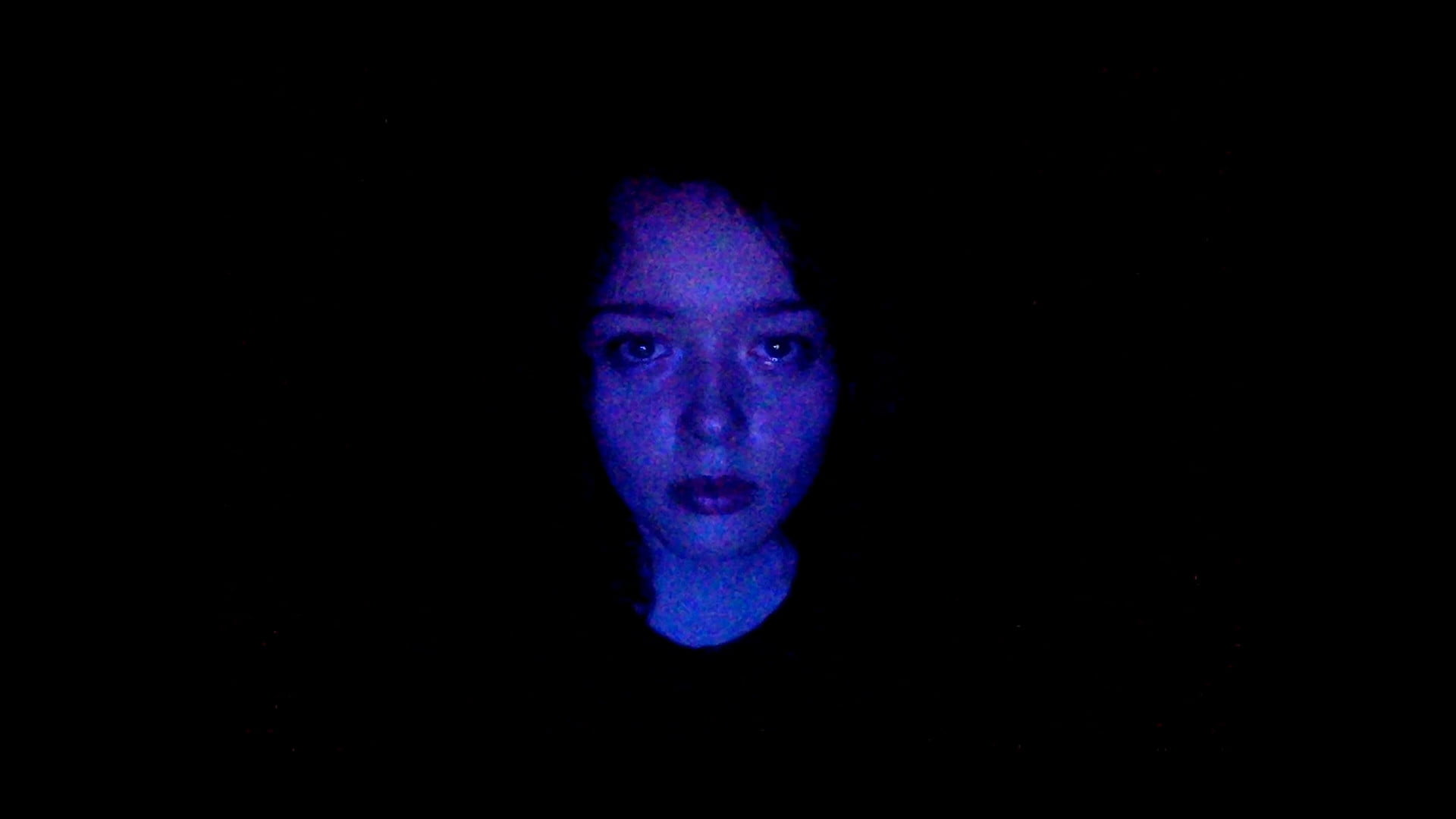When it premiered at Sundance a year ago, We’re All Going to the World’s Fair couldn’t help but look like a mirror held up to its audience, reflecting back the isolation of the average virtual viewer. It helped to experience this haunting microbudget mood piece months upon months into the pandemic, and through a laptop screen, the same black hole that absorbs its teenage heroine. Yet the film’s resonance inches beyond the edges of our particular moment, past the loneliness of the immediate now to the loneliness of the indefinite now. For as long as we’ve had the internet, we’ve had movies about the internet. Is it too soon, or too hyperbolic, to describe We’re All Going to the World’s Fair as one of the most insightful of them all?
Casey (Anna Cobb, remarkable in what the opening credits reveal is her feature debut) lives in an unidentified stretch of nowhere America, a small-town wasteland of empty fields and deserted Toys “R” Us parking lots. We never see her parents, and only hear them once; bellowing for quiet in the dead of night and on the other side of a wall, they seem as far away from her as the fellow message-board trawlers and the YouTube artists she follows. Like the similarly named Kayla from Eighth Grade, the sunny yin to this film’s doomy-macabre yang, Casey has no apparent friends or social life. Unlike Kayla, her main interest is creepypasta, that online community of horror folklorists and urban legend fanatics.
More specifically, she’s drawn to a role-playing game called The World’s Fair, in which participants utter a Candyman-like mantra into their devices, then creatively document the supposed supernatural changes their bodies and minds undergo. We first meet Casey as she’s joining the game, through a webcam session that serves as the film’s extended opening shot. After a false start, she tidies up her bedroom and dims the lights for better atmosphere, before relaunching into a séance of pinpricks, strobe light, and repeated incantation. Right from the jump, the movie foregrounds the question of where performance ends and the real Casey begins. It’s a line that will only grow blurrier as she trudges further into the pixelated unknown.
Jane Schoenbrun, the triple-threat writer, director, and editor of We’re All Going to the World’s Fair, completely immerses us in Casey’s browsing habits—which, by the troubling logic of this mysterious first feature, might be indistinguishable from her psychology. Long stretches unfold from the vantage of the girl’s webcam, and Casey draws readily on the visual language of horror for her vlogs, at one point executing a reasonably chilling riff on the overnight surveillance thrills of Paranormal Activity. The structure, meanwhile, almost suggests a tube channel, queuing up related videos as the teen toggles between her own performance art and that of the other players in her feed. If this fictional character made a movie about her life, it would probably look a lot like We’re All Going to the World’s Fair.

Is Casey really being sucked into the hungry maw of the internet, letting go of herself post by post? Or is she just expertly taking her turn in a game, cosplaying a slow-motion breakdown? Schoenbrun keeps the questions hanging like storm clouds, with a vital assist from their spookily opaque star. Cobb has the off-the-cuff vulnerability of a budding web celebrity, expertly conveying the ease of a generation that’s grown up on camera and the unease of someone who might be losing touch with reality, disappearing under glow-in-the-dark makeup and outbursts of debatably feigned despair. Her best scenes turn the audience into emotional detectives, sorting truth from artifice. Take, for example, the moment when Casey interrupts her own TikTok-ready song-and-dance routine with a sudden bloodcurdling screaming jag. It’s transparently a pantomime of shattering sanity, an act. But Cobb lets us see the real desperation bubbling beneath Casey’s imitation of the same.
We’re All Going to the World’s Fair can be as unsettling, in the creeping psychological darkness of its material, as the spooky genre fare it resembles. It’s difficult to watch the film and not think of stories of real-life teenagers falling down YouTube rabbit holes of suicidal depression or taking a wrong turn into right-wing radicalization. Unfriended, another of the few essential films about living online in the 21st century, used its ingenious laptop-vision gimmick to savage the way some teens compartmentalize their dark sides, by cyberbullying from the safety of anonymity. World’s Fair, which borrows techniques (but not the limitations) of Screenlife and found-footage thrillers, arrives at a conclusion no more comforting: For certain kids, there may be no meaningful distinction between the “real” them and who they are online.
But We’re All Going to the World’s Fair is no cautionary tale for concerned parents. Why sound an alarm about a world that’s already come to pass? The tone is more ambivalent, undercutting the anxiety with optimism. It’s there in a DIY appreciation for this particular subculture of storytellers and the creative victories of kids like Casey, a genuinely promising artist whether she considers herself one or not. (In an era when filmmakers still struggle to make the interfaces of phones and computers interesting to look at, here’s a movie that finds beauty in the harsh digital textures of streaming video, and in faces illuminated by the flashing lights of a monitor.) There’s also the way Schoenbrun, who’s non-binary, offers a metaphor for dysphoria in the mythology of their plot, running a line of influence to a seminal example of genre-bending internet cinema, The Matrix. As the film underscores, not all transformations of identity are destructive or harmful.
Eventually, Casey forges a connection with an older male player, a deep voice behind a creepy avatar. An audience’s first instinct might be protective alarm—especially when the actor, Michael J. Rogers, turns out to be a dead ringer for Jackie Earle Haley. But here, too, Schoenbrun resists easy answers, right up to a staggeringly ambiguous ending. The implications are troubling but far from obvious; where another filmmaker might emphasize the danger of reaching out into the digital abyss for a lifeline, this one only laments the impossibility of it — the way the computer screen will never truly be permeable, no matter how much empathy we pour into it. The ultimate roleplay, the film implies, is to pretend you could truly know someone online.
We’re All Going to the World’s Fair opens in select theaters April 15 and is available to rent or purchase on digital platforms April 22. For more reviews and writing by A.A. Dowd, visit his Authory page.


